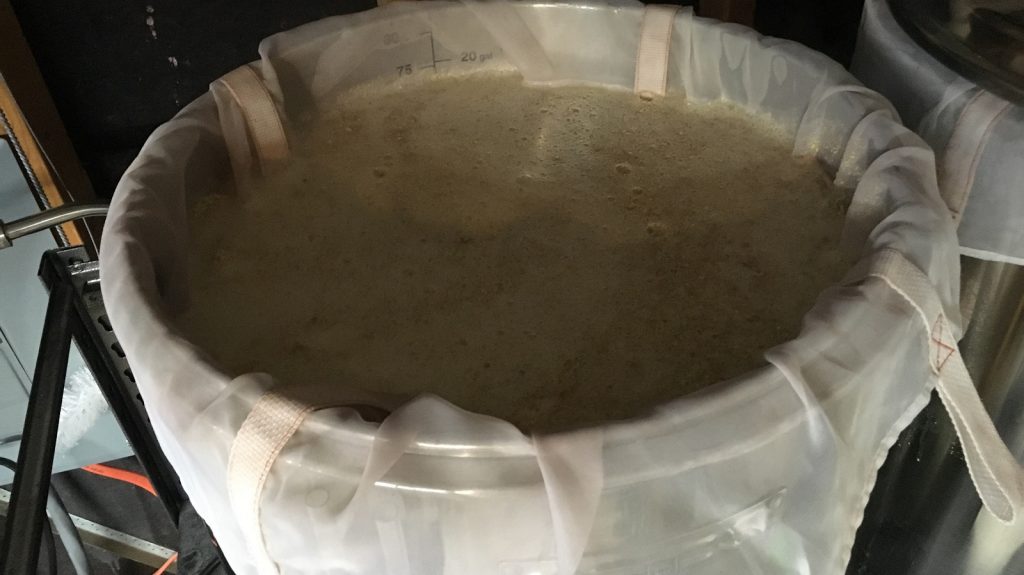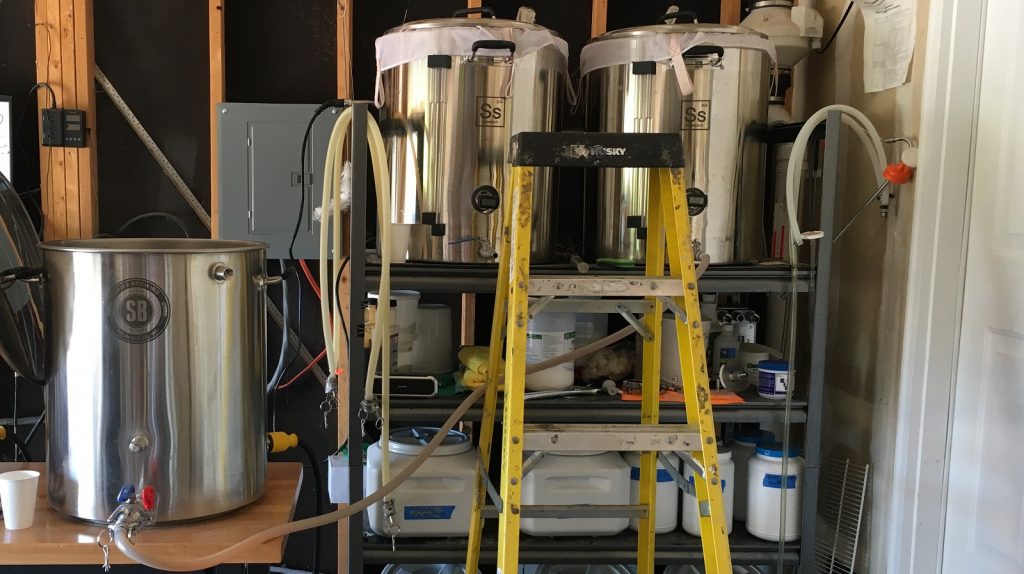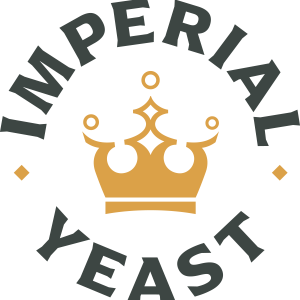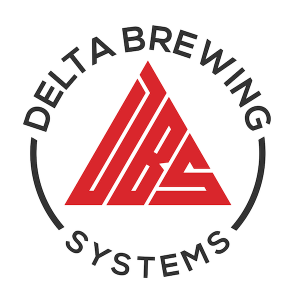Author: Jake Huolihan
Fermentation temperature receives a lot of attention from brewers interested in producing the best beer possible, as different yeasts are known respond favorably to certain temperature ranges. For example, while fermenting at 85°F/29°C is perfectly appropriate for a Saison, it’d likely lead to an undesirable mess in a German Pils. It’s for this reason many brewers invest in some form of fermentation temperature control, the goal of which is to ensure the fermenting beer maintains a set temperature throughout fermentation.
Those who don’t have a source of fermentation temperature control often rely on methods that, while arguably effective, lead to notable temperature swings during the process. As an exothermic process, fermentation can raise the temperature of beer by 7-10°F/4-6°C all on its own if left uncontrolled, which is usually enough to push it well outside of the recommended range. In response to various past xBmts suggesting specific fermentation temperatures may have less of an impact than expected, some have proposed the issue may not necessarily be the set temperature, but rather temperature variability during fermentation that negatively affects beer.
When results from a recent xBmt suggested tasters could not distinguish a Pale Ale fermented at a stable 66°F/19°C from one where the temperature was intermittently varied by 20°F/11°C, I was surprised and began to wonder if this would also be the case for a pale lager, a style many believe requires consistently cool temperatures in order to avoid off-flavors. With the ability to very precisely control fermentation temperature, I designed an xBmt to test it out for myself.
| PURPOSE |
To evaluate the differences between pale lagers fermented either at a stable temperature or in an environment where the temperature was highly variable throughout the fermentation process.
| METHODS |
For this xBmt, I went with a simple Czech Pale Lager recipe made with a commonly used traditional lager strain.
Disparate Times
Recipe Details
| Batch Size | Boil Time | IBU | SRM | Est. OG | Est. FG | ABV |
|---|---|---|---|---|---|---|
| 5.5 gal | 60 min | 49.7 IBUs | 4.7 SRM | 1.049 | 1.015 | 4.5 % |
| Actuals | 1.049 | 1.015 | 4.5 % | |||
Fermentables
| Name | Amount | % |
|---|---|---|
| IdaPils (Cargill) | 10.5 lbs | 95.45 |
| Melanoidin (Weyermann) | 8 oz | 4.55 |
Hops
| Name | Amount | Time | Use | Form | Alpha % |
|---|---|---|---|---|---|
| Tettnang | 45 g | 60 min | Boil | Pellet | 4.5 |
| Tettnang | 53 g | 30 min | Boil | Pellet | 4.5 |
| Tettnang | 45 g | 3 min | Boil | Pellet | 4.5 |
Yeast
| Name | Lab | Attenuation | Temperature |
|---|---|---|---|
| Urkel (L28) | Imperial Yeast | 73% | 52°F - 58°F |
Notes
| Water Profile: Ca 41 | Mg 0 | Na 8 | SO4 45 | Cl 42 |
Download
| Download this recipe's BeerXML file |
My first order of business on brew day was weighing out and milling the grain for a 10 gallon/38 liter batch that would later be split.
With the water adequately heated, I stirred in the grist then checked to ensure it was at my target mash temperature.
The mash was left to rest for 60 minutes with intermittent stirring.
When the mash rest was complete, I transferred the sweet wort from the MLT to the kettle.
During the lautering process, I weighed out the kettle hop additions.
The wort was then boiled for 60 minutes with hops added as listed in the recipe.
Once the boil was complete, I quickly chilled the wort.
A refractometer reading showed the wort was right at my target OG.

Identical volumes of wort were racked to separate sanitized Brew Buckets.
The filled vessels were connected to my glycol rig and left to finish chilling to a fairly standard lager fermentation temperature of 50°F/10°C, which took approximately 20 minutes. At this point, I set the hysteresis on one controller to 0.5°F/0.3°C while the other was set to 6°F/3.3°C. To be clear, this meant one batch would maintain a stable 50°F/10°C while the other would get up to 56°F/13.3°C every hour or so before being chilled back down to the set point.
I then pitched a fresh pouch of Imperial Yeast L28 Urkel into each batch before hitting them with 120 seconds of pure oxygen.
As fermentation began to slow 5 days post-pitch, I set the hysteresis on both batches to 1°F/0.6°C in order to prevent suck-back of airlock fluid caused by the vacuum created during the chilling of the variable temperature beer. With activity all but absent after another 5 days, 10 total since pitch, I took a hydrometer measurement indicating both had reached the expected FG.

When a second measurement taken 2 days later showed no change, I pressure transferred the beers to separate kegs.
The filled kegs were placed in my keezer and burst carbonated overnight before I reduced the gas to serving pressure. After a couple weeks of conditioning, they were carbonated and ready to serve to participants.

| RESULTS |
A total of 19 people of varying levels of experience participated in this xBmt. Each participant was served 1 sample of the beer fermented at a stable temperature and 2 samples of the beer fermented at a variable temperature in different colored opaque cups then asked to identify the unique sample. While 10 tasters (p<0.05) would have had to accurately identify the unique sample in order to reach statistical significance, only 6 (p=0.65) did, indicating participants in this xBmt were unable to reliably distinguish a pale lager fermented at a consistent 50°F/10°C from one where the temperature varied by 6°F/3.3°C.
My Impressions: of the 5 semi-blind triangle tests I attempted on these beers, I chose the unique sample just twice, and I’ll admit that I guessed every time. Both beers were great, a good thing seeing as they tasted identical to me.
| DISCUSSION |
When it comes to producing the finest lager possible, it’s commonly believed that one must ferment cool, which given certain environmental factors, often requires something to allow the brewer to maintain a steady temperature. In the event a lager beer falls too far outside of the recommended temperature range during fermentation, the results will be noticeable and unfortunate. However, the fact tasters in this xBmt were unable to reliably distinguish a pale lager fermented at a stable 50°F/10°C from one where the fermentation temperature varied by up to 6°F/3.3°C calls this notion into question.
In considering possible explanations for these findings, I couldn’t help but think of the past xBmts demonstrating lagers fermented at fairly large temperature differences were indistinguishable by tasters. If it’s true that such yeasts are more robust than many believe and, at least on the homebrew scale, don’t lead to noticeable off-flavors when fermented close to typical ale temperature, then it makes at least some sense that a swing of just 6°F/3.3°C wouldn’t be detrimental. Of course, there’s also the argument that temperature variability regardless of actual fermentation temperature puts stress on yeast that can lead to off-flavor production. Based on these results, it would seem the yeast had developed adequate enough skills to cope with the added stress.
I currently use a glycol rig to control fermentation temperature, which makes maintaining a stable temperature very easy. But for those brewers relying on less technological methods such as adding frozen water bottles to an ice bath, temperature swings during fermentation are a real concern, especially when making lagers. While these findings certainly aren’t conclusive, the fact neither tasters nor I could tell a difference between these xBmt beers leaves me at least moderately comfortable encouraging those who, due to an inability to precisely control fermentation temperature, may have avoided making lagers in the past to give it a shot and see how it works.
If you have any thoughts about this xBmt, please do not hesitate to share in the comments section below!
Support Brülosophy In Style!
All designs are available in various colors and sizes on Amazon!
Follow Brülosophy on:
FACEBOOK | TWITTER | INSTAGRAM
If you enjoy this stuff and feel compelled to support Brulosophy.com, please check out the Support page for details on how you can very easily do so. Thanks!






















15 thoughts on “exBEERiment | Fermentation Temperature: Stable vs. Variable In A Czech Pale Lager”
Thanks for doing this experiment. Although cost would make it prohibitive for most experiments, I wonder if chromatography would at least give us something to hang our hat on. Ha , if I hadn’t retired, maybe you guys could have sent me some some samples on a regular basis.
Interesting result and not entirely suprising to me. I think the claims that steady temp is essential come from people who’ve invested a lot in temperature control and want to believe it was money well spent. I’m not sure it matters so much, though I guess you’d have to test every yeast strain and every possible temperature swing to rule out any effect.
Where did you get your gycol rig?
His unit looks like one sold by SS Brewtech a couple of years ago. Their current models are “cleaner” looking and more upright, on casters.
Interesting read. I have variable temperature fluctuations in summer and has caused me issues on a light ale/blonde but not so much on a pale ale, perhaps the hops hide some off flavours in the pale ale. I was particularly interested in the suck back of the airlock during cold crashing, I’ve never thought of that. What could be a risk of not calculating that?
Also an xbmt with a pale ale and blonde with varying temps could well be interesting…
The initial vigorous start to fermentation is what is key. As long as the first couple days are cold, the beer should come out clean. A fermentation profile of 52 F for 2-3 days and then 58 F til complete works well. And to improve lager quality a step mash is very helpful if not essential, and decoction mashing beats melanoiden malt every time.
What a lovely looking beer! I recently brewed a pale lager fermented with S-23 at 19c in preassure fermentor was drinking it within the week how far homebrewing has come in the few years ive been doing it.
Oh and hats off to brulosophy for encouraging us to think outside the box!
Is it possible that the unusually high level of 50 IBU’s is masking any potential subtle differences that may otherwise be present?
The IBU are not unusually high, I live at nearly 6k feet altitude. BeerSmith shows 100% utilization.
I would try this again using different yeasts.And also dry vs liq , Fermentis S-23 I have found is more tolerable to changes that say 34-70. But good to know that this L-28 is a happy yeast
No offense, but you kept the yeast in its manufacturer-stated optimal range of between 52-58 degrees F.
Even with the fluctuation of temperature, it was always within that prime range. I would expect little if any difference in character given that the yeast really is not expected to stress much within the bounds of its designed temperature range.
Since we’re sharing guesses, I’ve always assumed that the temperature ranges were because of the less than ideal sourcing of yeasts back in the day. Methods and yeast banking have come a long way from strains being passed around by home brewers. Now you’re getting a pure culture vs those that might have been slightly less than a pure culture resulting in off flavors..particularly in the early dry yeasts.
One of the favorite beers I ever made was called Decimal (100IBU, 10%abv) that was racked on a yeast cake in early summer, leading to a fermentation temperature of 92F (!!!!!) before I sanitized several bags of ice to drop it down to the low 80s until it reached terminal gravity less than 3 days post-pitch
No esters, no off flavors, and won a couple of votes for “best beer” at the event in which it was served.
I think it would be more conclusive if the variable beer has more than 3 degrees difference.One set at lager temp and the other put where it’s ale temp and fluctuates.I made plenty of well received lagers fermented in my garage which sits around 17- 18 degrees Celsius
Great XBMT, This is a super helpful experiment to confirm us tropical weather brewers to save electricity + not put too much of a toll in our keezer ferm chamber. However it would be amazing for these xbmts to include a third batch of identical beer to see even higher temperature ranges ie: +/- 6C